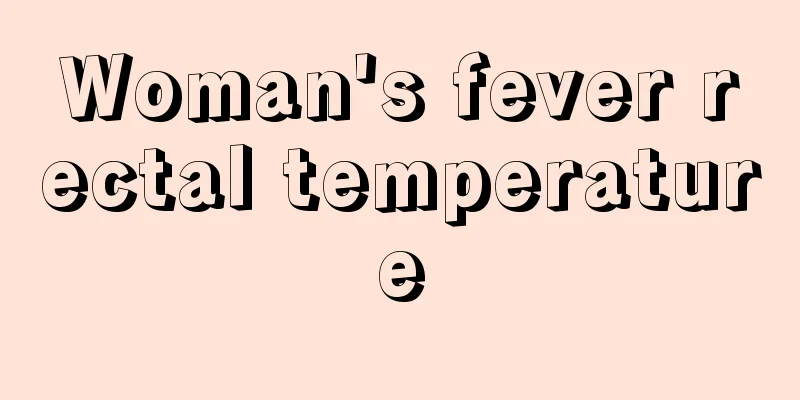These "pseudo-coarse grains" cause blood sugar to soar, and many people still eat them every day without knowing it!

|
Most people have this understanding: coarse grains raise blood sugar more slowly, and eating appropriate amounts of coarse grains is beneficial for controlling blood sugar. In fact, coarse grains are a large family, and not all coarse grains have the effect of controlling blood sugar. If they are not chosen or eaten correctly, some coarse grains can even be called "pseudo-coarse grains" because they raise blood sugar faster than fine grains such as rice and white flour. If you choose the wrong type, your blood sugar level will rise quickly Grains with a sticky texture , such as glutinous rice, yellow rice, glutinous corn, black glutinous rice , etc., raise blood sugar levels quickly. The main component of staple foods such as coarse and fine grains is starch, which mainly comes in two types: amylopectin and amylose . Whole grains such as oats and red beans are high in amylose , which is arranged very tightly and is not easily broken down in the body, so has relatively little effect on blood sugar. Image source: Pixabay However, glutinous grains contain more amylopectin , which has many branches and a relatively loose structure, making it easy to digest and decompose, and causing blood sugar to rise faster. If your blood sugar is not well controlled, be sure to avoid whole grains that are high in amylopectin. Take glutinous millet as an example. Many people like to drink glutinous millet porridge for dinner, but in fact, glutinous millet porridge raises blood sugar faster than white rice porridge. If you need to control your blood sugar, you must not drink a lot of millet porridge, and you cannot only use porridge for breakfast or dinner. You can eat some dry staple food first and then drink porridge. The porridge should not be cooked too soft. The same meal should be paired with ingredients rich in protein and dietary fiber, such as milk, soy products, miscellaneous beans, vegetables, etc. Also pay attention to eating the staple food last, which is more friendly to blood sugar. Image source: Pixabay If you eat the wrong way , you may be eating "pseudo-whole grains" In terms of eating methods, many people like to grind whole grains into powder and then mix it with water to make a paste to drink, which they find convenient and nutritious. However, what you may not know is that the action of “powdering” will increase the glycemic index (GI) of food. From the table below, we can see that after whole grains are ground into powder, the GI generally increases, and some foods directly change from low GI to high GI foods. Comparison of glycemic index (GI) before and after powdering GI <55 is low, 55-70 is medium, >70 is high For example, red beans. When steamed normally, the GI of red beans is only 23. However, if they are ground into powder and eaten as a paste, the GI will more than triple to 72, making it a high GI food. Therefore, people who need to control their blood sugar must pay attention to this "trap". If you like to eat whole grain paste and need to control blood sugar, it is recommended to give priority to those with a relatively low glycemic index after grinding, such as mung beans and lentils, and avoid grinding red beans, coix seeds, black rice, etc. into powder to make paste. When making whole grain paste , you may want to replace water with milk Soy milk and milk contain various nutrients such as protein, fat, calcium, etc. Using them to make whole grain paste can slow down the rate of blood sugar rise to a certain extent, and the taste and nutrition are also better. When making it, you can mix one flat spoon of whole grain powder with 150 ml of hot milk or soy milk, but milk is preferred. Even if blood sugar is high , you can't just eat whole grains Although whole grains are good, it is best not to eat them alone. It is best to combine coarse and fine grains. Eating too much whole grains can easily cause discomfort, such as bloating, abdominal pain, indigestion, acid reflux, hiccups, etc. From the perspective of controlling sugar, it is best to control the ratio of coarse grains to fine grains at 1:1 or 2:1. People with better gastrointestinal function can eat half coarse grains and half fine grains, or even 2 coarse grains and 1 fine grain. People with weaker gastrointestinal function can eat 30% coarse grains and 70% fine grains. Image source: Pixabay In addition, it is recommended to evenly distribute whole grains into three meals a day, and not concentrate them all in one meal. Some people have difficulty digesting whole grains at night, and may experience acid reflux after lying down in bed. In this case, you can eat less or no whole grains at night. Planning and production Source: Eat three meals a day Author: Yu Kang, Professor of Clinical Nutrition Department, Peking Union Medical College Hospital Editor: Zhong Yanping |
<<: Predicting Flu Trends: Harder Than You Think
>>: Let's learn about 24-hour dynamic blood pressure monitoring
Recommend
Can my aunt eat strawberries?
Female friends need to pay attention to their die...
What should girls use to soak their feet if they have athlete's foot?
Generally speaking, tinea pedis is difficult to e...
What should I do if the white blood cell count is positive in leucorrhea examination?
Regular gynecological examinations are necessary,...
Who is prone to prostate cancer?
For male friends, there may be various male disea...
Is eyebrow tattooing good? Is it harmful to the body?
In today's era, many people pursue perfect be...
What does the fiery red maple leaf symbolize? How do maple leaves perform photosynthesis?
The legend of the maple leaf is that if you pick ...
How to treat polycystic ovarian syndrome
Polycystic ovary is a disease caused by endocrine...
What causes menstrual fatigue?
Menstruation is a normal physiological period for...
What medicine should I take if there is no water in my private parts?
When a woman feels sexually excited and sexually ...
What does it mean to dream about a girl?
Dreams have a lot to do with a person's daily...
What parts of squid cannot be eaten? Do I need to remove the purple skin on the squid tentacles?
Squids have purple skin with a thin layer on the ...
Will diarrhea in early pregnancy lead to miscarriage?
Diarrhea in early pregnancy may cause miscarriage...
Should I take vitamin C or vitamin E if I have spots on my face?
Many people know that vitamins are beneficial for...
Why do breasts always itch?
The breasts are the most important part of the fe...









